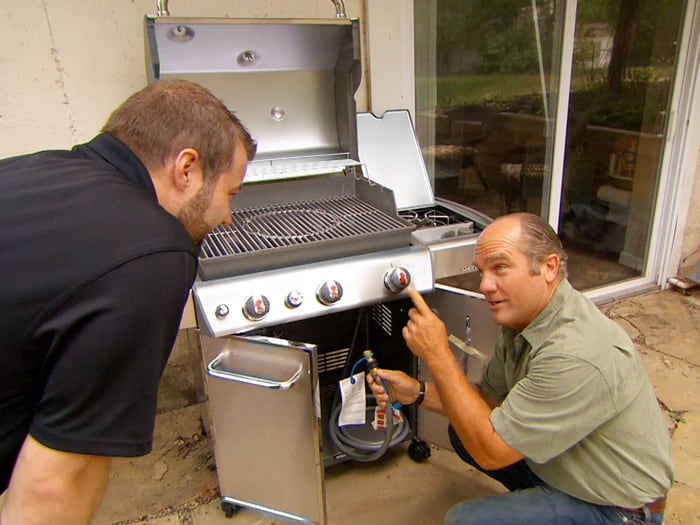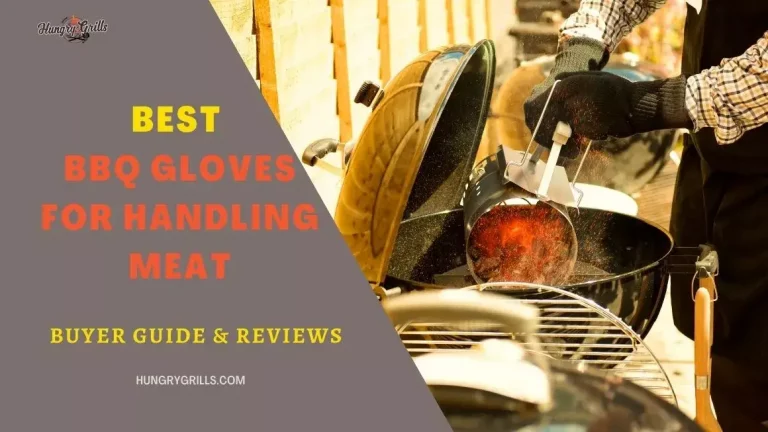How To Connect Natural Gas Line To Grill? Easiest Way!
To connect a natural gas line to your grill, you will need to install a gas shutoff valve, a flexible gas line, and a fitting to connect the line to the grill. Then, you will need to tighten the fitting onto the gas inlet, connect the hose, and turn on the gas supply, testing for leaks before use.
Safety First
Before we get into the details of connecting a natural gas line to your grill, it’s essential to emphasize the importance of safety. Working with natural gas can be dangerous, so it’s crucial to take precautions to ensure your safety and the safety of those around you. Always follow these guidelines when working with natural gas:
- Turn off the gas supply: Make sure the gas supply to the area is turned off before you begin working.
- Use proper tools: Use only tools designed for use with natural gas, and avoid using any tools that could cause sparks.
- Check for leaks: Always check for gas leaks before lighting the grill.
- Ventilate the area: Work in a well-ventilated area to avoid any build-up of gas fumes.
- Call a professional: If you’re not confident in your ability to work with natural gas, don’t hesitate to call a professional to do the job for you.

Materials Needed
To connect a natural gas line to your grill, you’ll need the following materials:
- Natural gas hose (usually around 10 feet long)
- Gas shutoff valve (1/2-inch or 3/4-inch, depending on your gas line)
- Gas pipe fittings (1/2-inch or 3/4-inch)
- Pipe thread sealant
- Adjustable wrenches
- Teflon tape
Locating the Gas Line
Before you begin installing the gas line, you’ll need to locate the gas line that will supply the grill. You can usually find this line near your home’s meter, and it may be underground or above ground. If you’re not sure where the gas line is located, consult your utility company or a professional gas fitter.
Installing the Gas Line
Once you’ve located the gas line, you’ll need to install the gas shutoff valve. This valve will allow you to turn off the gas supply to the grill if necessary. Follow these steps to install the valve:
- Turn off the gas supply: Before you begin working, make sure the gas supply to the area is turned off.
- Clean the pipe: Clean the end of the gas line with a pipe cleaner to remove any debris or dirt.
- Apply thread sealant: Apply thread sealant to the threads of the gas shutoff valve.
- Attach the valve: Screw the gas shutoff valve onto the gas line using an adjustable wrench.
- Tighten the valve: Use two adjustable wrenches to tighten the valve onto the gas line. Hold the valve with one wrench and tighten the fitting with the other wrench.

Connecting the Gas Line to the Grill
Once you’ve installed the gas shutoff valve, you can connect the gas line to the grill. Follow these steps to connect the gas line:
- Clean the grill: Clean the grill and remove any debris or dirt from the gas inlet.
- Apply thread sealant: Apply thread sealant to the threads of the gas pipe fitting.
- Attach the fitting: Screw the gas pipe fitting onto the gas inlet of the grill using an adjustable wrench.
- Tighten the fitting: Use two adjustable wrenches to tighten the fitting onto the gas inlet. Hold the fitting with one wrench and tighten the connection with the other wrench.
- Connect the hose: Attach one end of the natural gas hose to the gas shutoff valve using an adjustable wrench, and the other end to the gas pipe fitting on the grill.
- Tighten the hose connections: Use two adjustable wrenches to tighten the hose connections. Hold the hose with one wrench and tighten the connection with the other wrench.
- Turn on the gas supply: Turn on the gas supply and check for leaks using a gas leak detection solution. Apply the solution to all connections and look for any bubbles, which would indicate a leak. If you detect a leak, turn off the gas supply and tighten the connection.
Testing the Connection
Once you’ve connected the gas line to the grill, it’s essential to test the connection before using the grill. Follow these steps to test the connection:
- Turn on the gas supply: Turn on the gas supply to the grill.
- Check for leaks: Apply gas leak detection solution to all connections and check for any bubbles.
- Light the grill: Light the grill and ensure that it is functioning correctly.
- Check the flame: Check the flame to ensure that it is blue and steady. If the flame is yellow or flickering, there may be a problem with the gas supply or the connection.
Maintenance
Regular maintenance is essential to keep your grill running smoothly and safely. Here are a few tips to keep in mind:
- Check for leaks: Regularly check for gas leaks by applying a gas leak detection solution to all connections.
- Clean the grill: Clean the grill regularly to remove any debris or dirt that could clog the gas inlet.
- Replace the hose: Replace the natural gas hose every five years to ensure that it is in good condition.
- Schedule regular inspections: Schedule regular inspections with a professional gas fitter to ensure that the gas line and connections are functioning correctly.
Can I hook up my own natural gas grill?
While it’s possible to hook up your own natural gas grill, it’s essential to follow all safety guidelines and ensure that the gas line and connections are installed correctly. Working with natural gas can be dangerous, and it’s best to consult with a professional gas fitter if you’re not confident in your ability to do the job. A gas fitter will be able to ensure that the gas line is properly installed, and all connections are tight and leak-free.

Should I run a gas line for my grill?
If you plan to use your grill frequently, running a gas line is a great option. A natural gas line is a reliable and convenient way to fuel your grill without having to worry about running out of propane. However, running a gas line can be expensive, and it’s essential to hire a professional to do the job. A professional gas fitter will be able to ensure that the gas line is installed correctly and all connections are secure.
Do you need a regulator on a natural gas grill?
Yes, you need a regulator on a natural gas grill. A regulator ensures that the gas pressure is reduced to a safe and consistent level before entering the grill. Natural gas flows at a higher pressure than propane, and without a regulator, the high pressure could damage the grill’s internal components or cause a fire. Make sure to choose a regulator that is compatible with your grill’s natural gas inlet size and pressure requirements. The regulator should be installed between the gas line and the grill’s gas inlet, and it’s essential to ensure that the regulator is functioning correctly before using the grill.
FAQs
Can I connect my grill to a natural gas line myself?
Yes, but it’s recommended to hire a professional. If confident, use a conversion kit and follow the grill manufacturer’s guidelines.
What tools do I need to connect a natural gas line to my grill?
You’ll need an adjustable wrench, pipe thread sealant, and a gas-rated Teflon tape. Ensure all connections are secure and leak-free.
How do I check for gas leaks after connecting the natural gas line to my grill?
Apply a soapy water solution to all connections. Bubbles indicate a leak. If found, tighten the connection or seek professional assistance.
Can I convert a propane grill to natural gas?
Yes, with a conversion kit provided by the grill manufacturer. Follow the specific instructions included in the kit for a safe and proper conversion.
Is it safe to use natural gas for my grill?
Yes, when installed correctly. Ensure proper ventilation, regularly check for leaks, and follow safety guidelines to enjoy safe and convenient grilling.
Conclusion
Connecting a natural gas line to your grill is a great way to enhance the flavor and convenience of outdoor cooking. However, it’s crucial to follow all safety guidelines and ensure that the gas line and connections are installed correctly. By following the steps outlined in this article and taking proper maintenance precautions, you can enjoy safe and efficient grilling with natural gas.
Are you really enjoying different types of dishes and love to make tours several times? Grilling something is the core of enjoyment if you make fun with friends & family.
However Hungry Grills is most trustable yet in shares knowledge about Grills and its related chop chop job & making loyal reviewed to readers.
-Mitchel Shawn





